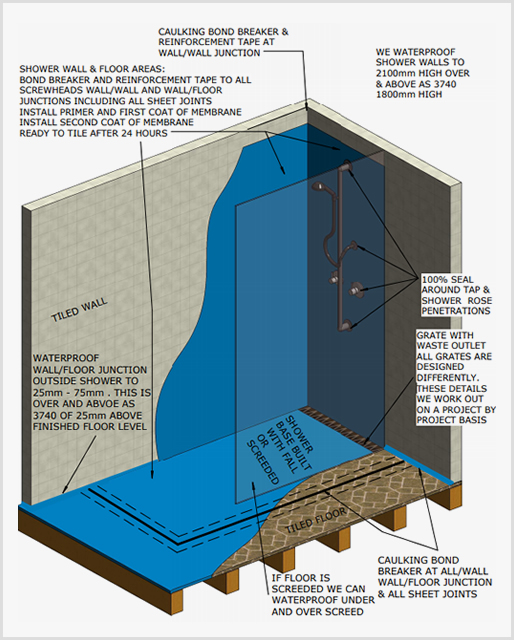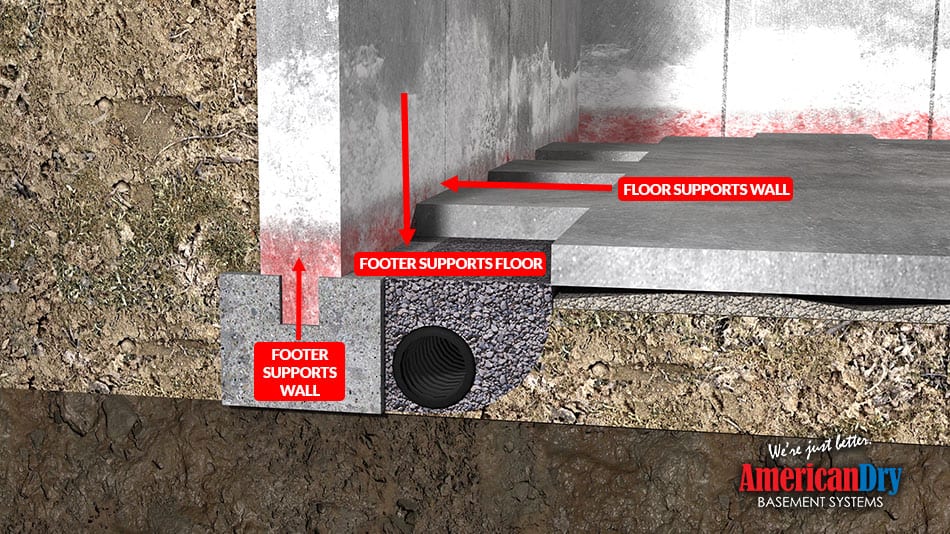Waterproofing Auckland Can Be Fun For Everyone
Wiki Article
Waterproofing Auckland - The Facts
Table of ContentsWaterproofing Auckland Fundamentals ExplainedUnknown Facts About Waterproofing AucklandAll about Waterproofing AucklandThe Greatest Guide To Waterproofing AucklandThe Best Guide To Waterproofing Auckland
45m (18) in size, are stocked gradual inclines. The joints of these pipelines are kept open. The collecting chambers are created at appropriate intervals and also at transforming points. The accumulating chambers are not glued from the inside or outdoors, to get water from the surroundings. The perforated pipelines are then covered with loosened materials like chips and steel, to form a filter media.The below ground water finds the means of least resistance with the filter media. The water is collected in the perforated pipelines via the filter media.
The procedure for the below ground water tank is the same as that of the basement, other than for the following factors. A provision for a pump sump is made, rather than the rain gutter setup. The overflow pipe lies at the desired level, to drain pipes out the excess water. Check this pipe for its rigidity prior to the waterproofing work treatment.


Waterproofing Auckland Fundamentals Explained
If white or colored joints are called for, after that the grey cement joints are raked, and white concrete or shade cement slurry is used with a tiny travel over the surface for joints of a coordinating color. The surface is again cleaned with sawdust. to remove excess white or shade concrete sticking to the polished china mosaic surface.The base and also accelerator are mixed together symmetrical by weight. This blended compound is after that applied with a spatula or handheld weapon devices any place needed. Extra material is removed with a putty knife and also a smooth vertical joint is produced. Because the sealer is very costly, utilize it.
For water-proofing of the horizontal expansion joint, plans must start from the R.C.C. phase of the building. Inverted beam of lights are taken to the place, for the development joint, side by side.
Socketing (pressure grouting)' is a procedure to grout the cement slurry by pressure into the porous concrete participant. For quiting unseen leaks in toilets, terraces, and the basement, this technique is normally made use of. Following a sequence of the work procedure. is observed. Tidy the surface area where socketing is to be done.
Waterproofing Auckland - The Facts
Fix 25mm (1) G.I. outlet over the metal, utilizing rich cement mortar around the outlet as well as steel. If the waterproofing work treatment is not done correctly, it can posture problems. Fixings and upkeep of waterproofing can show really problematic for the customer.The joint in between the (tee) of external upright pile and also P.V.C./ C.I. piece. The joint between the flushing pipe as well as I.W.C pan. All these joints must be secured with the correct sealer, at the corresponding phases throughout the my link execution of the work.
Fill up all the spaces in the floor covering of W.C. with concrete. Examine the joint in between the P-trap and L.W.C. pan from above, by placing a hand into the trap. Seal this joint with M-seal, if it is partially open. Inspect the joint between the flushing pipe and L.W.C. pan by damaging just one floor tile, fitted exactly over the joint.
The Of Waterproofing Auckland
Open up the "Tee' of the vertical pile from the outside, with a ladder or zula and also observe the joint of C.I. piece and also Tee' with torchlight and seal it effectively. If leakage still lingers, damage open the concealed flushing G.I. pipeline as well as examine if it is leak-proof.
If this does not quit the leakage, break open the total system and also check the joint at the P-trap as well as C.I./ P.V.C. pipe. Do the brand-new waterproofing work treatment completely with utmost care. Usually, 90% of leakages quit, if we execute the repair service job as mentioned above, in the initial four points.
like the container drainpipes, for their water tightness. This can be examined by stopping the operation of the clean hand basin as well as maintaining these lines entirely dry and running them once more after 4-5 days. If the leakages dry out and also begin, the source is with these lines. Burst the lines as well as situate the resource and replace the afflicted component.
If leaks still continue, attempt socketing and also grouting of concrete slurry in the damaged portion. Finally, burst the shower room waterproofing job treatment and also re-do it carefully. A typical as well as effective approach for dealing with small leaks is to deal with the afflicted part with concrete slurry. Apply the cement slurry from the top as well as let it pass through in the fractures through the top portion.
The Main Principles Of Waterproofing Auckland
Check the damaged section of the balcony utilizing a wood club and also inspect if it has peeled anonymous off. Get rid of the loosened section with a chisel as well as hammer. Re-do it carefully. If the leakage is from the edges or from the parapet wall, after that fill up all the fractures after damaging it open with cement.Some chemicals are recommended for blending with concrete, at the time of concreting. The standard method of brickbat coba is still the most prominent of water-proofing technique in India. Waterproofing substances are normally readily available in powder and fluid kind, as they offer the double purpose of waterproofing work procedure and warmth insulating.
Guarantee that the socketing is done before the base coat job. Make certain that there is no leakage from the bath W.C. slab Our site once the socketing is done. Ensure that the traps as well as launch pipes are repaired effectively before the brickbat coba coat. Ensure that all the brickbats are well-soaked in water, before usage.
Keep a proper gap between the brickbats. Inspect the incline of the brickbat layer, in the direction of the catch. Ensure that the water-proofing compound is mixed in the mortar, for each stage of work. The overcoat must be performed in one stroke, without any joints. Guarantee appropriate completing near traps as well as spouts.
Report this wiki page